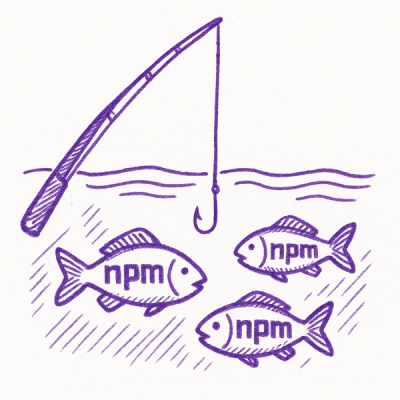What is heimdalljs-graph?
The heimdalljs-graph npm package is a tool for creating and manipulating graphs, particularly useful for performance monitoring and profiling in JavaScript applications. It allows users to create nodes, edges, and traverse the graph to analyze performance data.
What are heimdalljs-graph's main functionalities?
Creating a Graph
This feature allows you to create a new graph instance using the heimdalljs-graph package.
const { Graph } = require('heimdalljs-graph');
const graph = new Graph();
Adding Nodes
This feature allows you to add nodes to the graph. Nodes can represent various points of interest in your application.
const { Graph, Node } = require('heimdalljs-graph');
const graph = new Graph();
const node = new Node('node1');
graph.addNode(node);
Adding Edges
This feature allows you to add edges between nodes in the graph, representing relationships or dependencies between different parts of your application.
const { Graph, Node } = require('heimdalljs-graph');
const graph = new Graph();
const node1 = new Node('node1');
const node2 = new Node('node2');
graph.addNode(node1);
graph.addNode(node2);
graph.addEdge(node1, node2);
Traversing the Graph
This feature allows you to traverse the graph and perform operations on each node. In this example, it logs the ID of each node.
const { Graph, Node } = require('heimdalljs-graph');
const graph = new Graph();
const node1 = new Node('node1');
const node2 = new Node('node2');
graph.addNode(node1);
graph.addNode(node2);
graph.addEdge(node1, node2);
graph.traverse((node) => {
console.log(node.id);
});
Other packages similar to heimdalljs-graph
graphlib
Graphlib is a library for creating and manipulating directed graphs in JavaScript. It provides similar functionalities to heimdalljs-graph, such as adding nodes and edges, and traversing the graph. However, it is more general-purpose and not specifically tailored for performance monitoring.
cytoscape
Cytoscape is a graph theory library for visualizing and analyzing complex networks. It offers a wide range of features for graph manipulation and visualization, making it more suitable for applications that require detailed graph analysis and visualization compared to heimdalljs-graph.
dagre
Dagre is a JavaScript library for laying out directed graphs. It focuses on arranging nodes and edges in a visually appealing manner, which can complement heimdalljs-graph's functionalities by providing better visualization options.
heimdalljs-graph
heimdalljs-graph is intended to be the primary entry point for doing visualizations with data
gathered by Heimdall.
Loading Data
Loading from JSON File
Example:
const heimdallGraph = require('heimdalljs-graph');
let graph = heimdallGraph.loadFromFile('some/path/on/disk.json');
Loading from a Heimdall Node
Example:
const heimdallGraph = require('heimdalljs-graph');
let graph = heimdallGraph.loadFromNode(heimdallNode);
Interacting with the Graph
Once data is loaded, the resulting object is called a "node". Each node in the graph provides
an API for iterating its subgraph as well as iterating its own stats.
The API that each node supports is:
labeltoJSONadjacentIteratordfsIteratorbfsIterator
label
A POJO property that describes the node. It will always include a name
property and for broccoli nodes will include a broccoliNode property.
Example:
node.label === {
name: 'TreeMerger (allTrees)',
broccoliNode: true,
}
toJSON()
Returns a POJO that represents the serialized subgraph rooted at this node (the
entire tree if called on the root node).
There is no particular guarantee about the format (as it will change over time),
but a general example might be:
console.log(JSON.stringify(node.toJSON(), null, 2));
{
nodes: [{
id: 1,
children: [2,3],
stats: {
time: {
self: 5000000,
},
fs: {
lstat: {
count: 2,
time: 2000000
}
},
own: {
}
}
}, {
}]
}
dfsIterator(until)
Returns an iterator that yields every node in the subgraph sourced at this node.
Nodes are yielded in depth-first order. If the optional parameter until is
passed, nodes for which until returns true will not be yielded, nor will
nodes in their subgraph, unless those nodes are reachable by some other path.
Example:
for (n of node.dfsIterator()) {
console.log(n.label.name);
}
bfsIterator()
Returns an iterator that yields every node in the subgraph sourced at this node.
Nodes are yielded in breadth-first order. If the optional parameter until is
passed, nodes for which until returns true will not be yielded, nor will
nodes in their subgraph, unless those nodes are reachable by some other path.
Example:
for (n of node.bfsIterator()) {
console.log(n.label.name);
}
adjacentIterator()
Returns an iterator that yields each adjacent outbound node. There is no guarantee
about the order in which they are yielded.
Example:
for (n of node.adjacentIterator()) {
console.log(n.label.name);
}
statsIterator()
Returns an iterator that yields [name, value] pairs of stat names and values.
Example:
for ([statName, statValue] of node.statsIterator()) {
console.log(statName, statValue);
}



